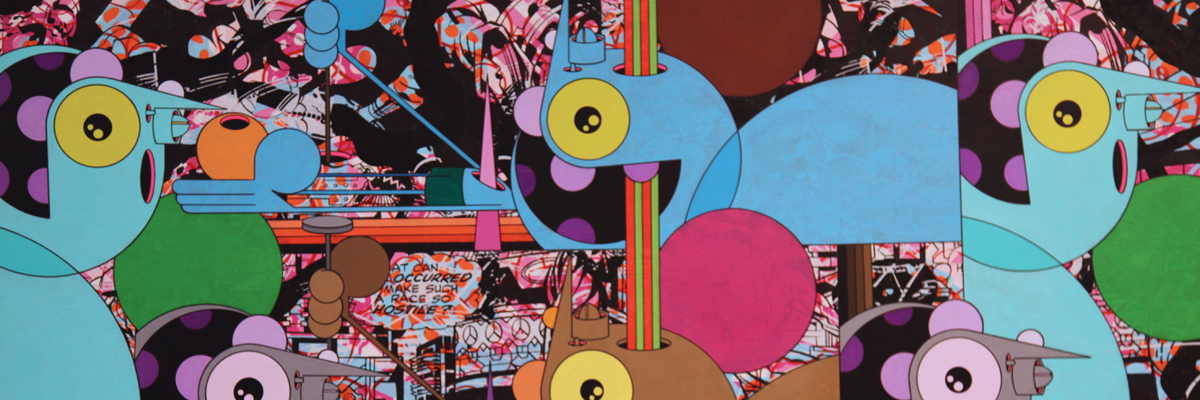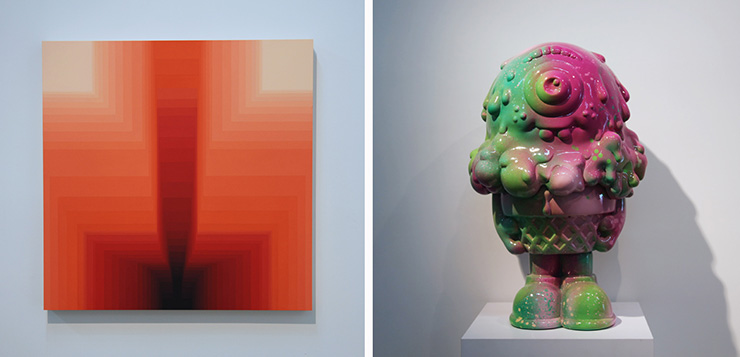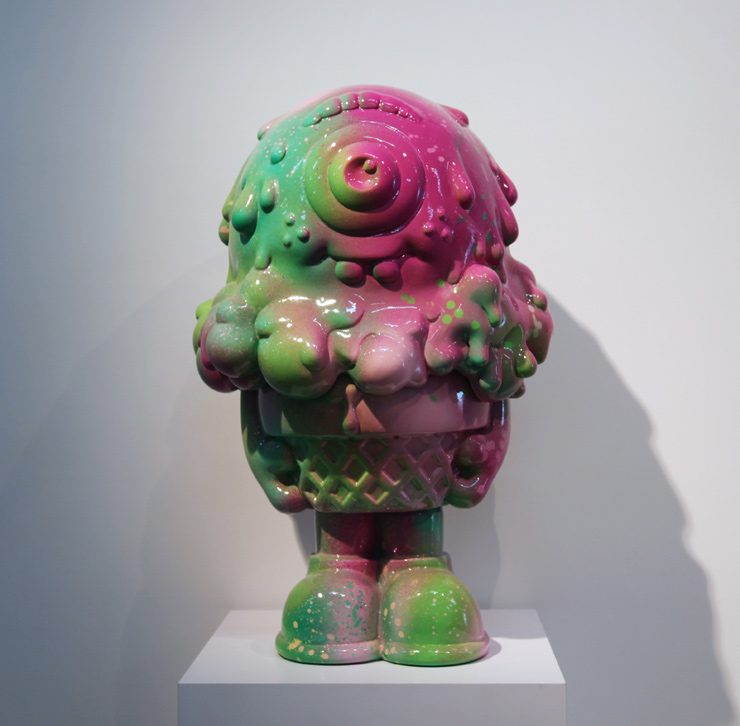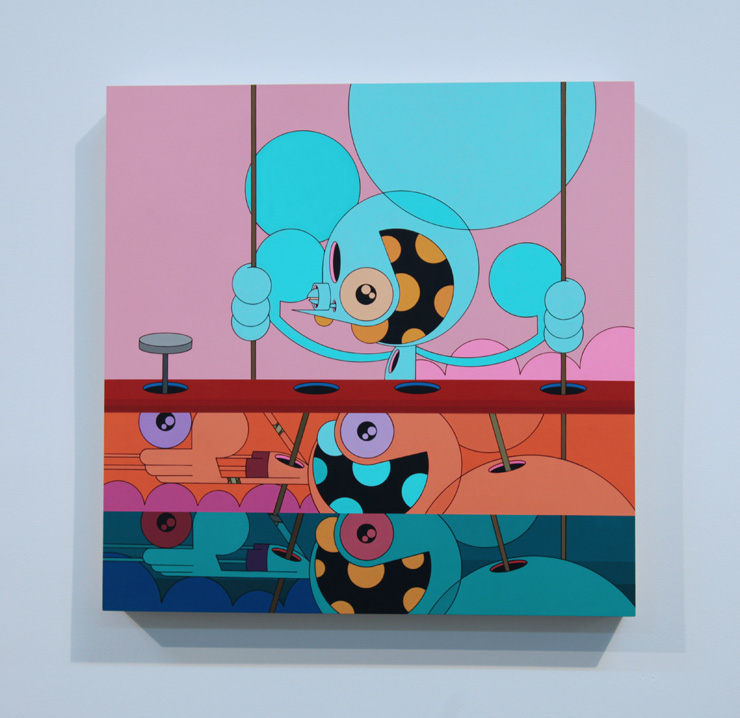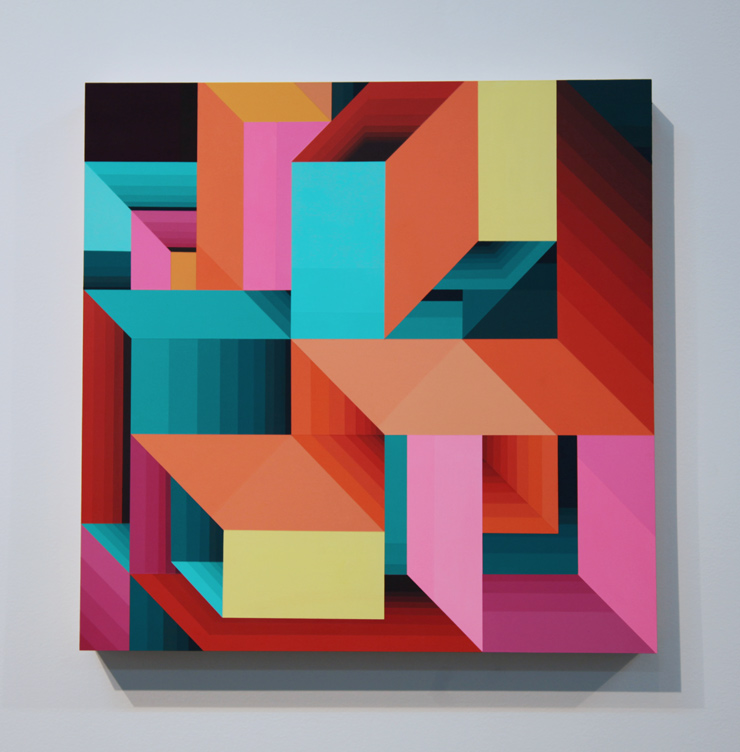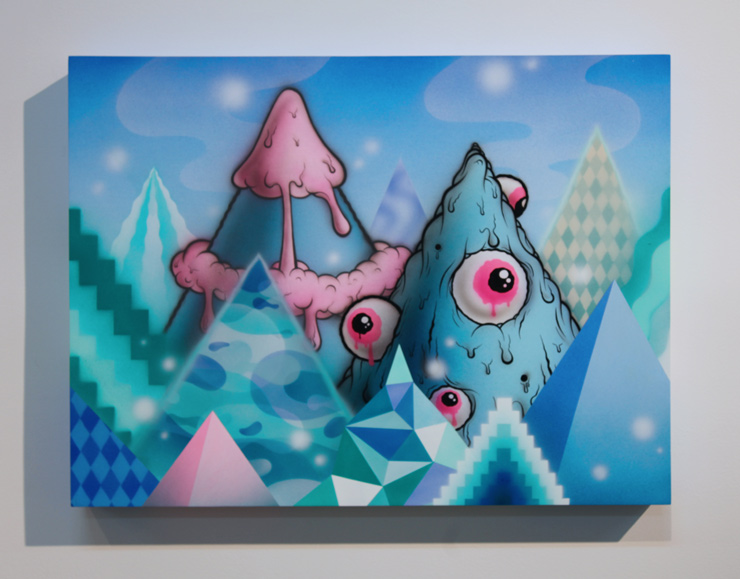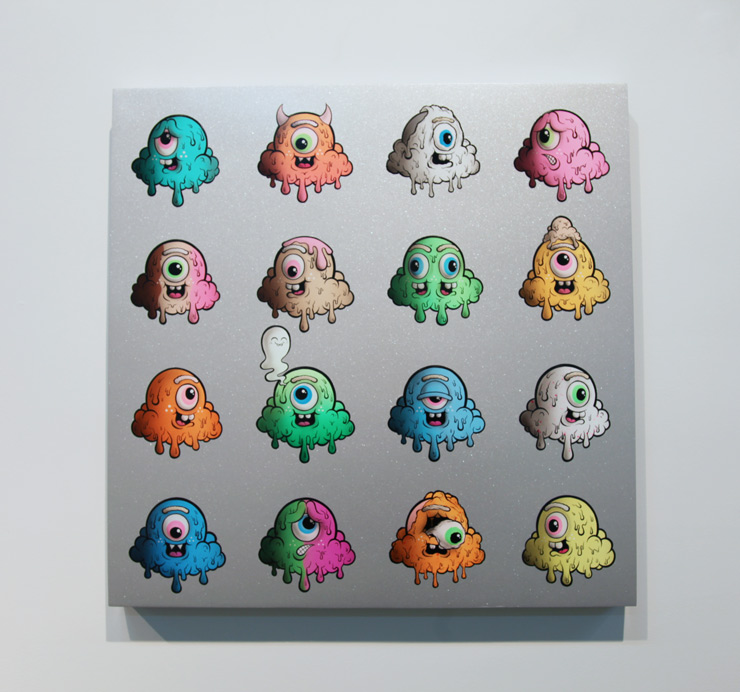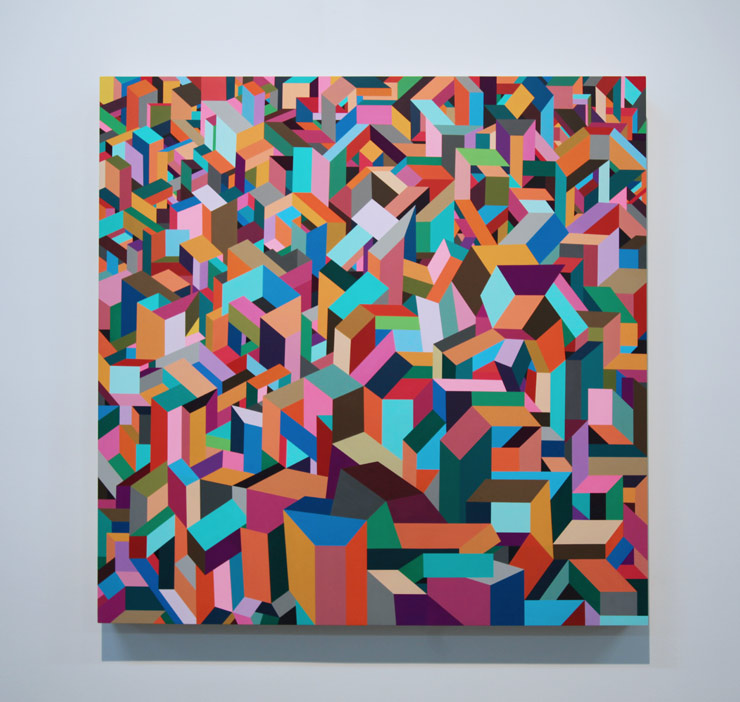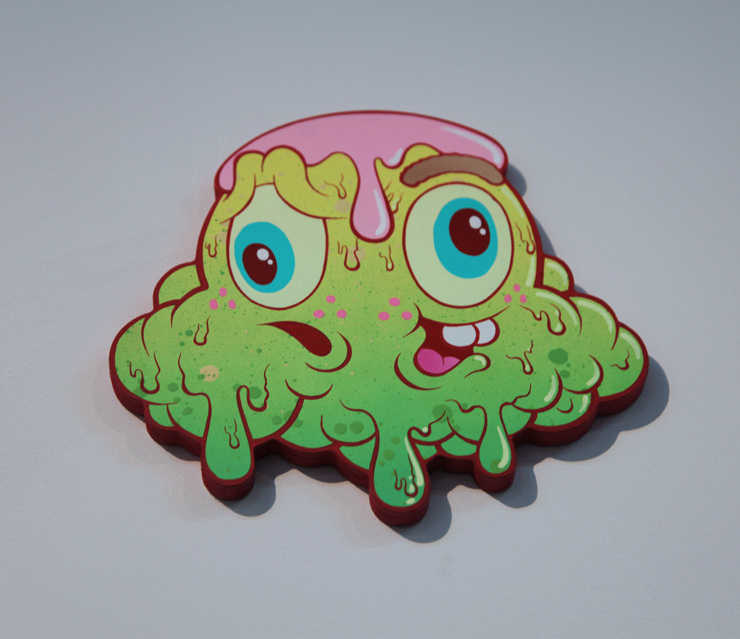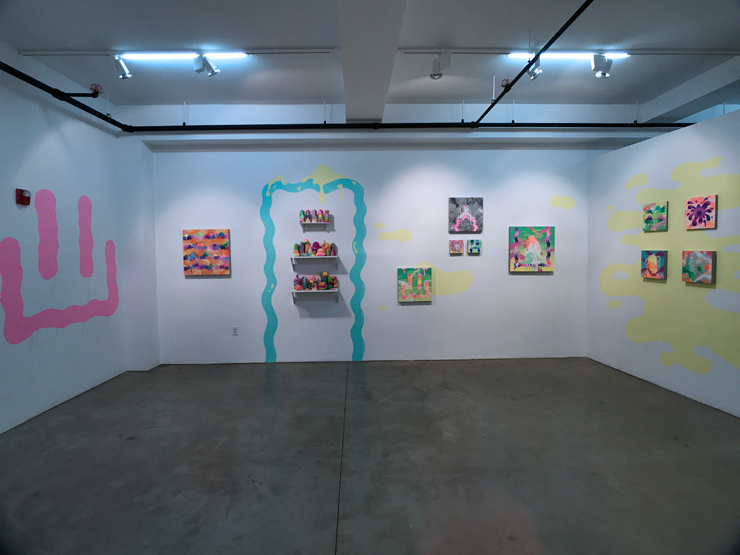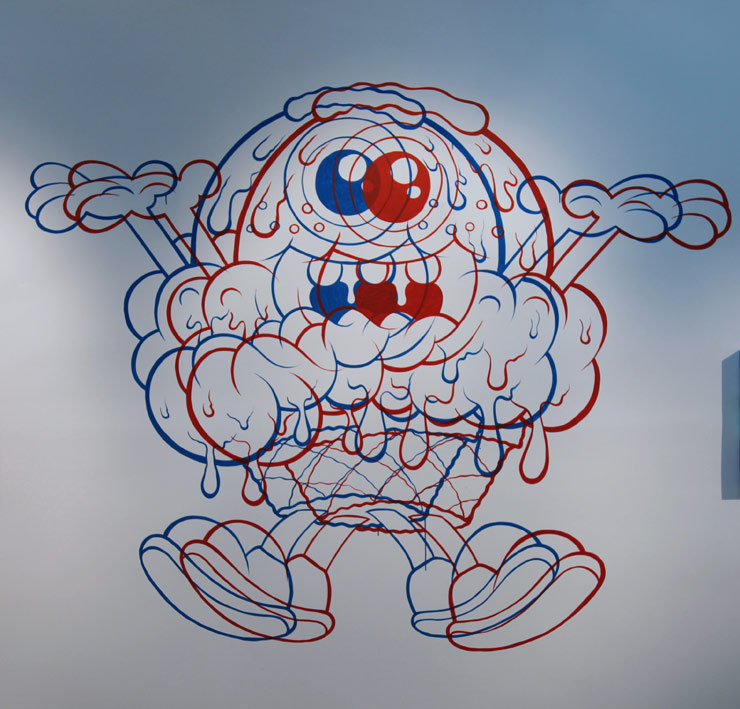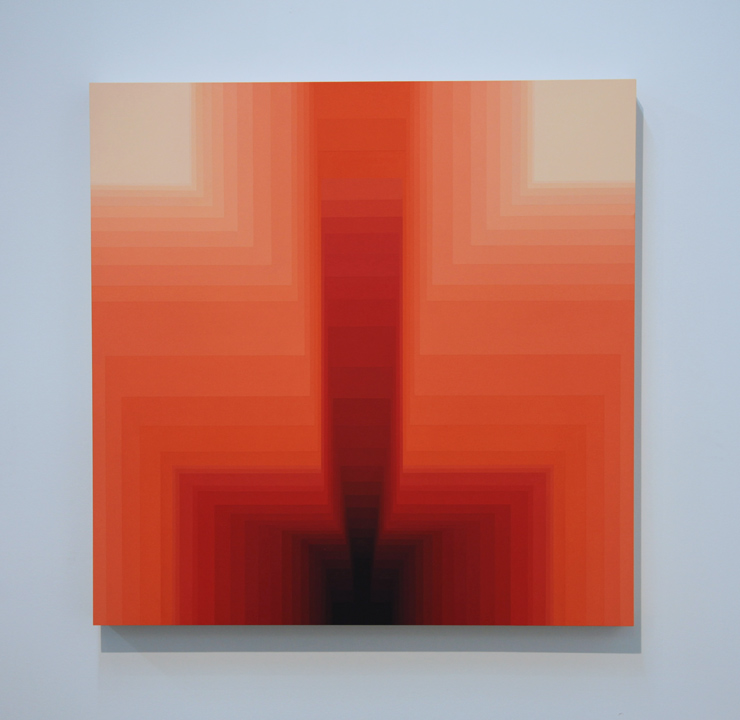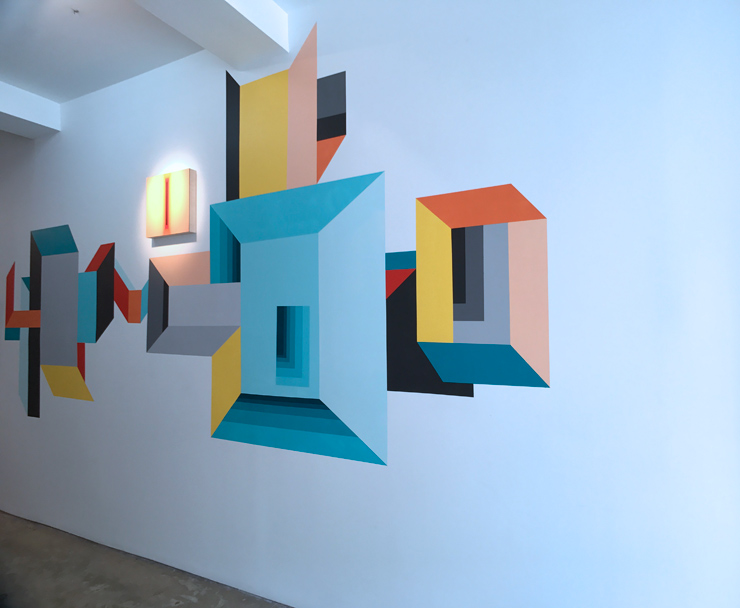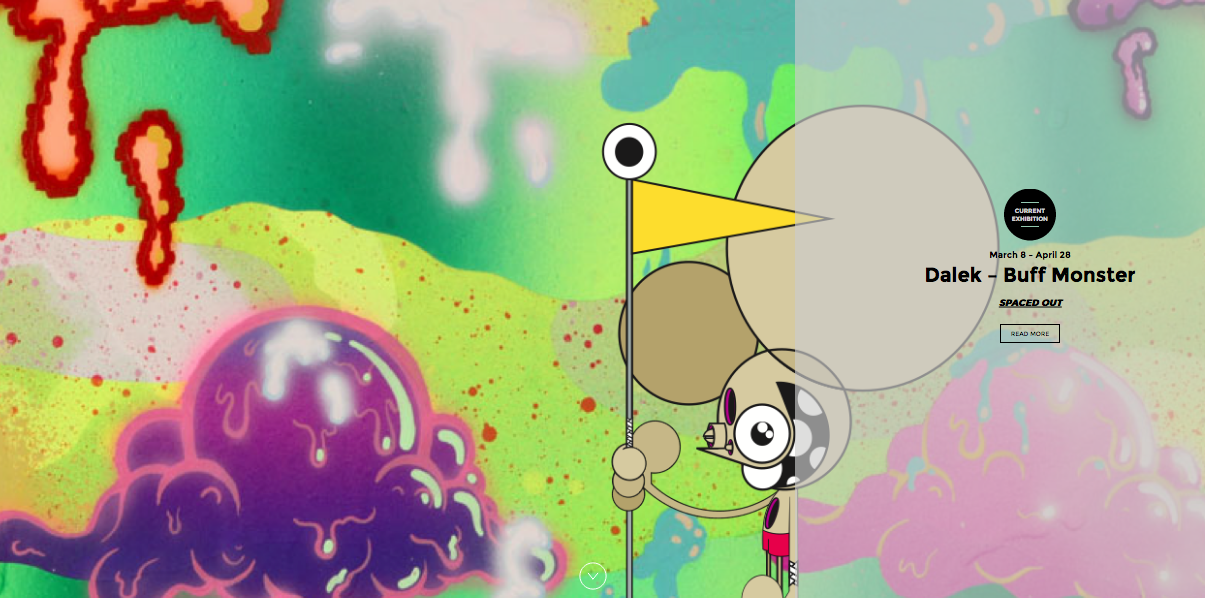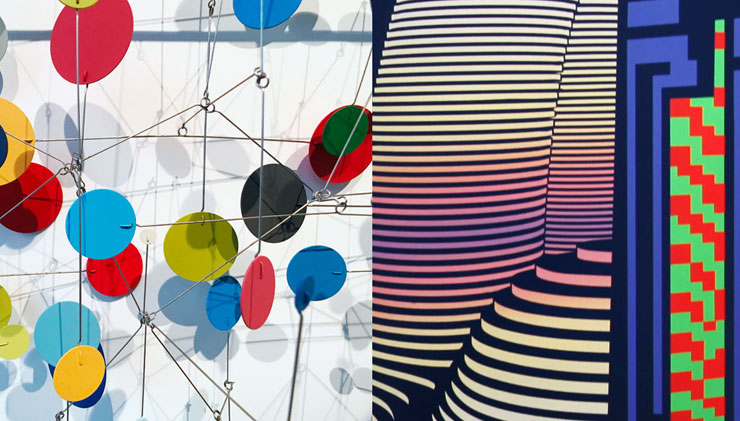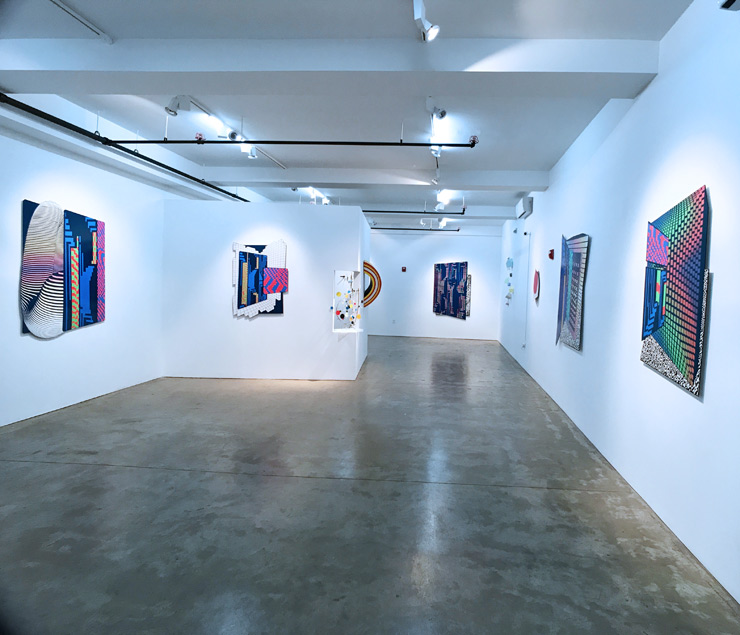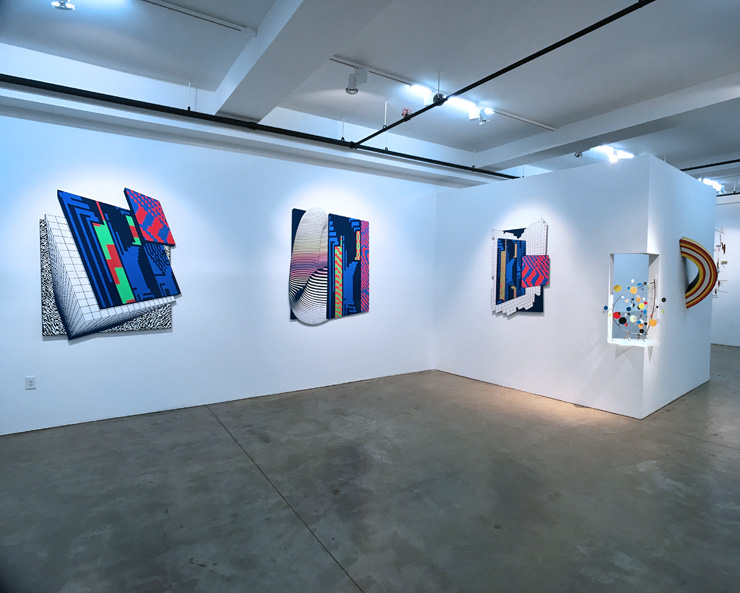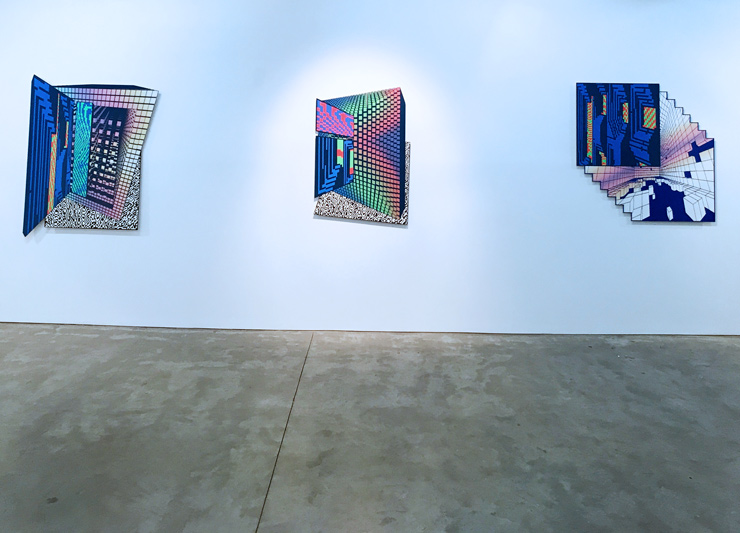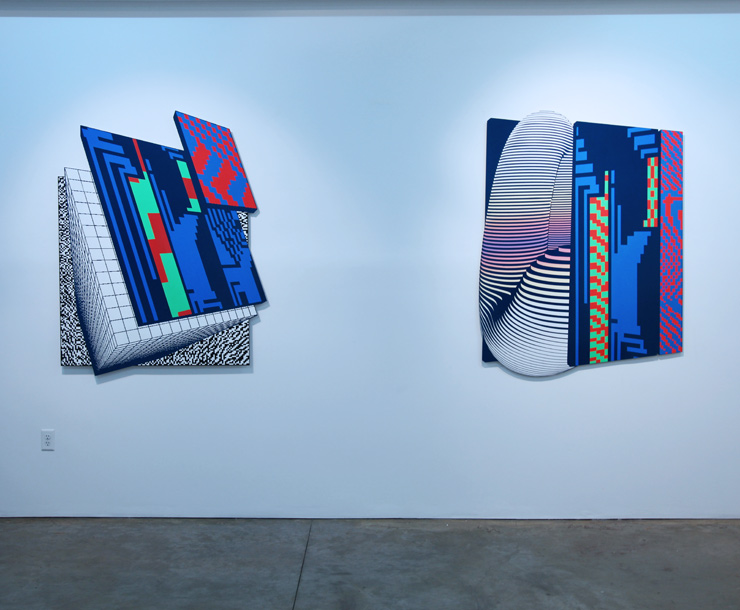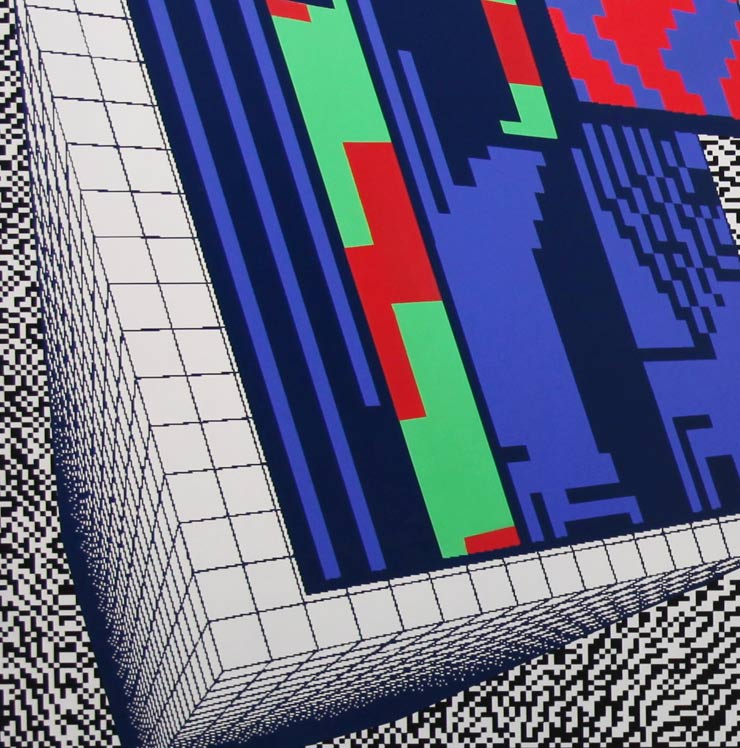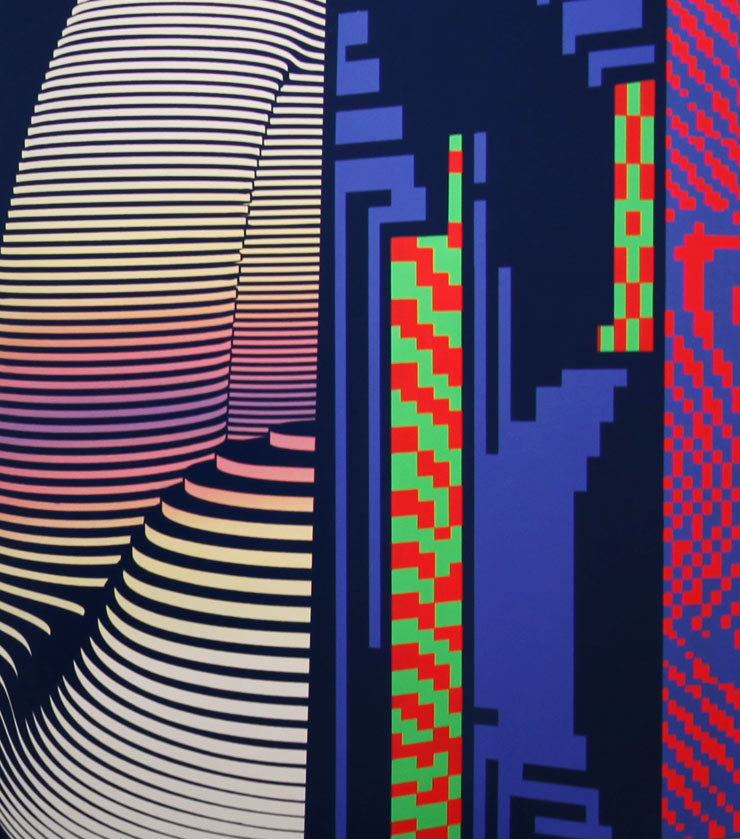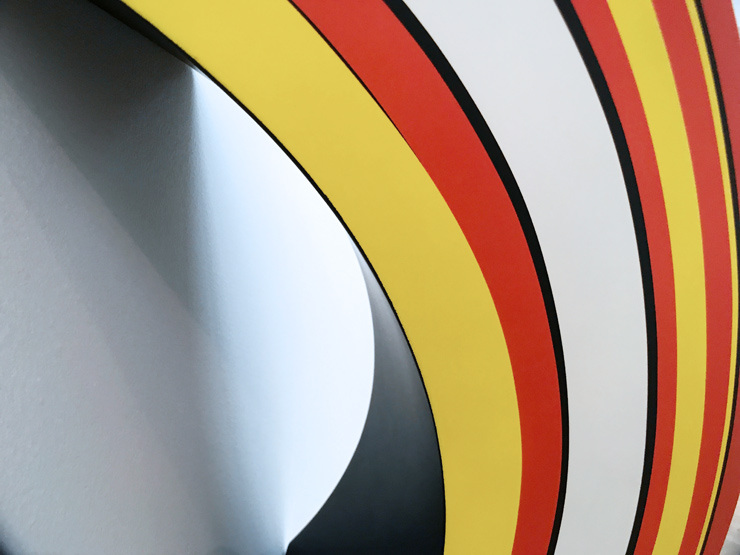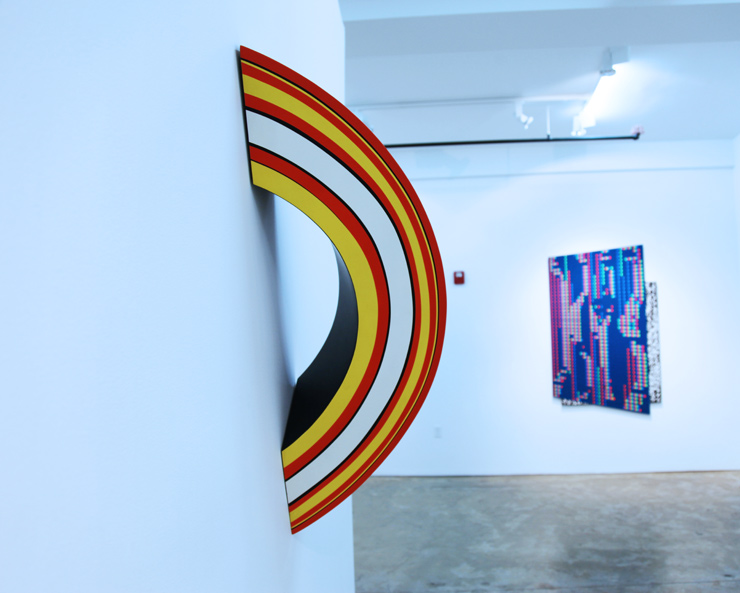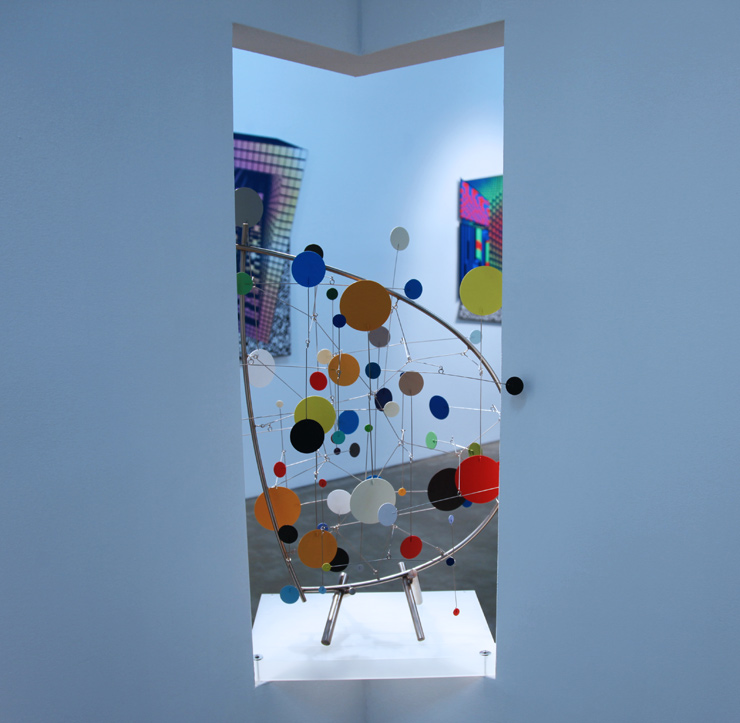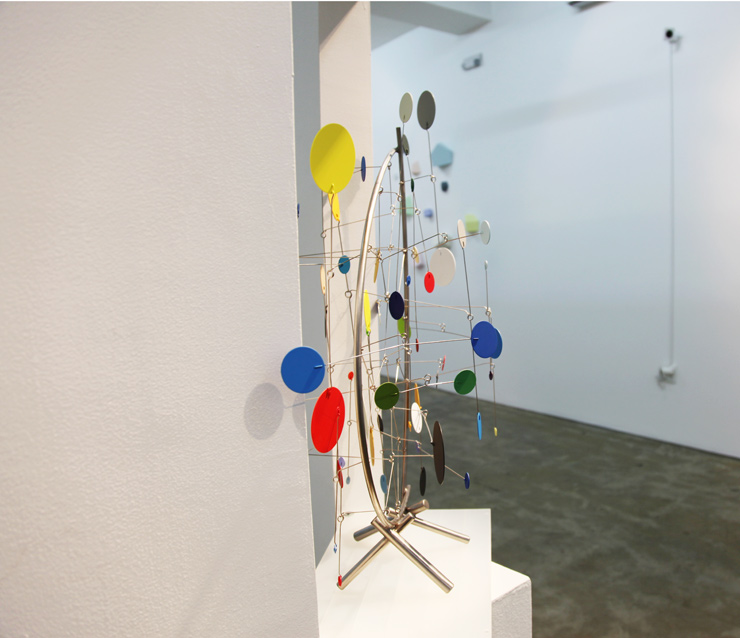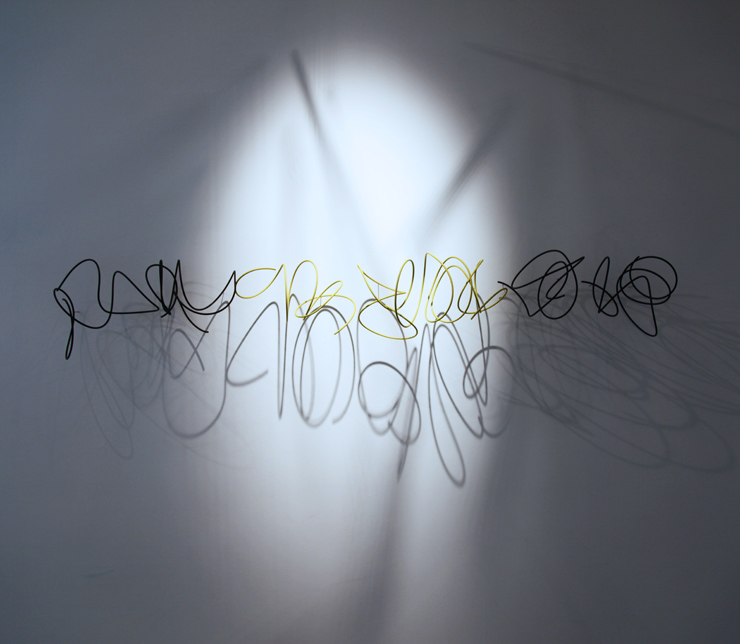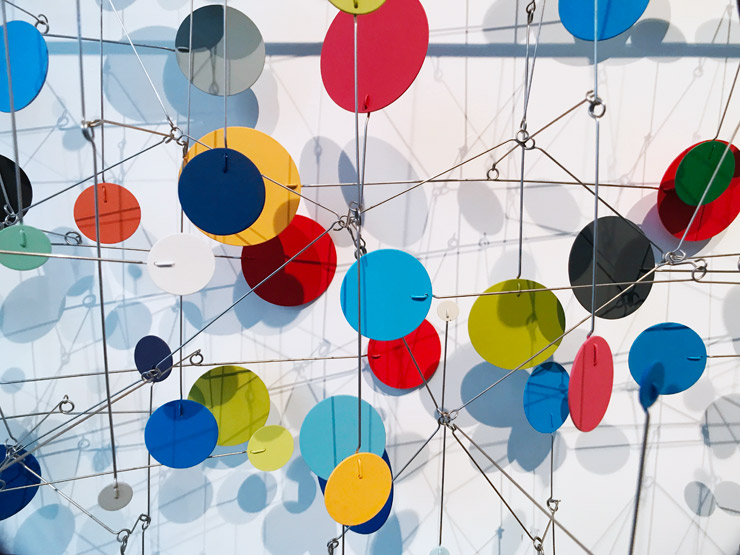Street Artist Felipe Pantone opens a new show tonight and gifts two new outside walls to NYC. BSA talks to him and GR gallery director Alberto Pasini about the exhibition.
An established studio in the north-eastern Italian town of Sacile since the late 1970s, the Studio d’Arte GR has specialized in Kinetic, Op, and Programmed art for decades. Curating what they estimate to be over 300 shows worldwide over that time, their GR Gallery is relatively new to New York, opening in 2016 with a 40 piece group show spanning the most unusual and dynamic techniques of the genres.
As it turns out, they are here just in time to offer a show to Argentinian/Spanish Street Artist Felipe Pantone, who has been expanding upon a geometric graffuturism vocabulary that the last decade has set free on the streets in cities around the world.

Felipe Pantone for St. ART Now in the Lower East Side. (Photo © Jaime Rojo)
Already a recognized and rising name due to his ocular experimentations with graffiti, video, sculpture, computer graphics, digital and other visual glitchery, Pantone is defining while discovering – tonight with “Planned Iridescence,” his debut solo New York exhibition.
The 1600 square foot gallery in the Bowery gives plenty of room for movement to the 14 pieces that include wall collages and sculpture, each using some of the experimental patterns and visually vibrating elements you’ve come to expect, yet are still surprised by.
The iridescence referred to is in the form of panels of controlled synthetic oil spills, cut into shimmering quadrilaterals, deliberately placed within a a neat cluster of visual tremor. In addition to the indoor exhibition, Pantone has created two new murals in the neighborhood, welcome gifts to a city that never tires of being blown away by new talent.
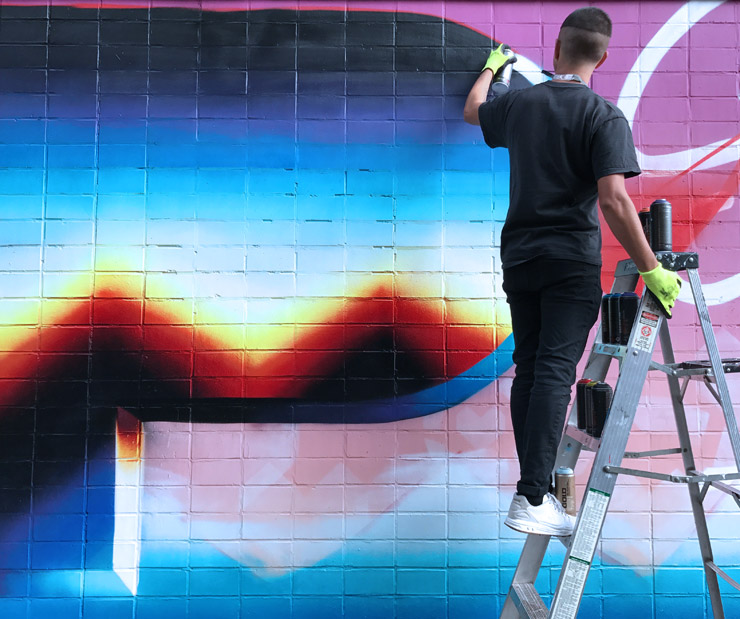
Felipe Pantone for St. ART Now in the Lower East Side. (Photo © Jaime Rojo)
We spoke with Pantone about his work inside and outside, his optic/kinetic influences and his evolutionary approach to learning.
Brooklyn Street Art: So much of your work is capturing the optical/informational/technological chaos we are countenancing daily. Do you think you are mastering the chaos, or reflecting it?
Felipe Pantone: I am trying to reflect it. I’m not trying to send a message but to propose questions. Some people look at my work and they find it overwhelming, loud, strident. Some other people relate to its dynamism, the speed, and find that it might even evoke the way they interact with the world and our modern cities.

Felipe Pantone for St. ART Now in the Lower East Side. (Photo © Jaime Rojo)
BSA: Part of the graffiti writer life is about disrupting a space, taking it, claiming it. Your Street Art also can be described as disruptive, competing for attention. Is this true?
Felipe Pantone: Graffiti was my first way to show my work immediately, for free, and worldwide, before the Internet was available for everybody. Graffiti is to art what H&M is to fashion, or what Ikea is to furniture: disposable, ephemeral, but a true product of our times. Thanks to my quest to claiming my space on the street I found the style that today has become my work, and now everything makes sense to me because I feel like a true product of my times myself, and as an artist one should always be oneself.
BSA: You’ve talked about your work as belonging to the present. With its references to 1960s/70s optic art, a low-fi video recalling 80s art installations, and graphics reminiscent of 80s/90s early consumer computer paint programs, could you also say you are recognizing the past?
Felipe Pantone: The fact that Op-Art explored movement in the 60s is something that has always attracted me irrationally but it’s also something that today I include in my work intentionally to convey dynamism. I usually have elements that might remind you of 80s computers graphics to bring some sort of technological idea, but it’s not in my interest to talk about the 80s or 90s in particular.
Of course I recognize the past, I’ve always been really curious about what happened in history, but it’s not my intention to talk about history in my work.
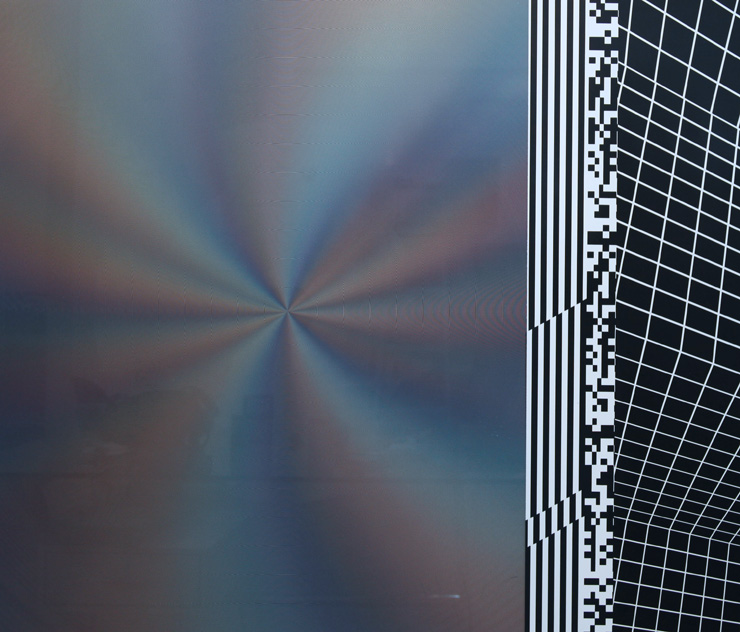
Felipe Pantone. Detail. Planned Iridescence. GR Gallery. NYC. October, 2017. (Photo © Jaime Rojo)
BSA: Is art a means of transmission, and if so, what is your art transmitting?
Felipe Pantone: I intend to talk about what I understand about the world as a person that travels constantly and lives intensely.
BSA: The current speed of technology and the volume of images that we are consuming must be met with new skills for processing them or at least editing them. What skills are you learning?
Felipe Pantone: I try my best to keep myself up to date with all the new techniques that I think are interesting for my work. I studied fine arts, mostly model painting and sculpture. So everything else I learned online: design programs, 3D, video editing, photography, film. I’m working with CNC and laser cutters, UV printers, vinyl cutters… but there’s so much still to be learned!
We live in exciting times.
**************************
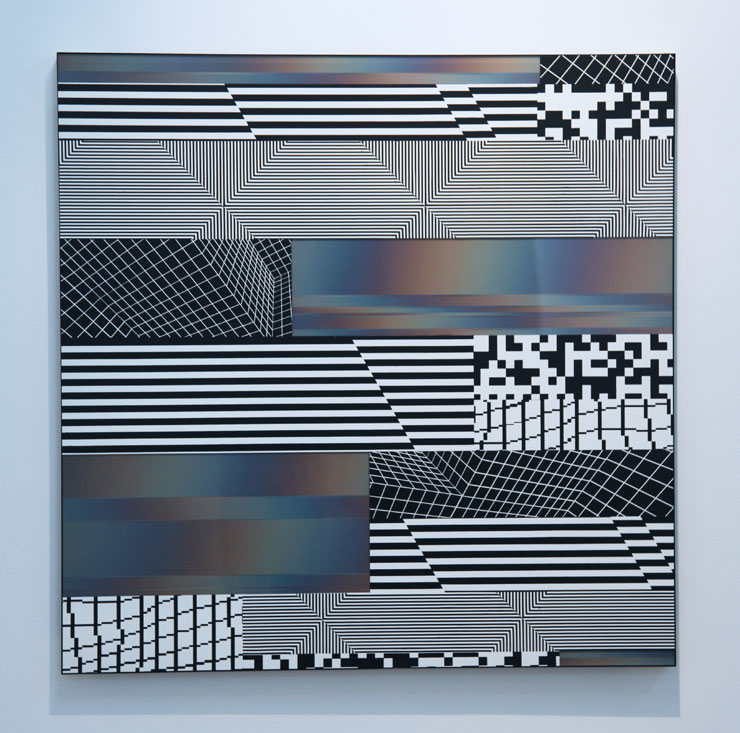
Felipe Pantone. Planned Iridescence. GR Gallery. NYC. October, 2017. (Photo © Jaime Rojo)
We spoke with GR Gallery Director Alberto Pasini, who sees the work of Pantone as an evolution of other optic/kinetic artists, some of them founders and masters, whom they have represented in the past such as Bruno Munari, Gianni Colombo, Giovanni Anceschi, Davide Boriani, Getulio Alviani, and Dadamaino.
Luckily, these movements of Street and Optical art have coalesced just at the right moment and there are already a few eye-popping players, enabling a new generation to push the boundaries on the street and here in the gallery setting; all fusing together striking elements of graphic design, lettering, and an endless sophisticated manipulation of geometric shapes.
BSA: Why did you decide to give Felipe his first solo exhibition in NYC?
Alberto Pasini: We made contact with Felipe in the last two years because he represents the new generation of this movement. He is the one who is bringing this art movement established in the 60’s back to life. So that’s why we picked him, why he picked us and why we have started this collaboration.
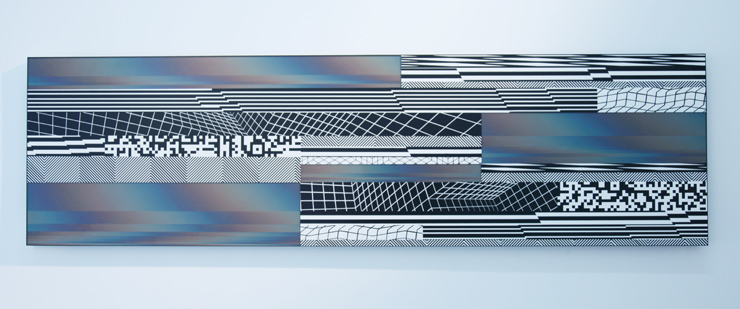
Felipe Pantone. Planned Iridescence. GR Gallery. NYC. October, 2017. (Photo © Jaime Rojo)
BSA: We are constantly bombarded with images. How in your opinion does Felipe integrate into his work the chaos that we see on our daily lives and what we experience on TV, billboards and the news?
Alberto Pasini: Felipe obviously pays attention to light and movement but he also brings the Optical and Kinetic Art to the next level and brings it up to date because he takes a lot of inspiration from the street, from the billboards, from TV.
Nowadays our lives are heavily influenced by Social Media, computer design and technology – so this is what he brings in his art and how he keeps up to date and how he re-invents Optical and Kinetic Art.

Felipe Pantone. Detail. Planned Iridescence. GR Gallery. NYC. October, 2017. (Photo © Jaime Rojo)
BSA: How many artworks will comprise this exhibition and can you talk about the medium?
Alberto Pasini: There will be 14 pieces. With this exhibition Felipe is introducing for the very first time a brand new series on this new body of work. This is the first time he is working with this new kind of material.
Basically he adds to his normal material, which is enamel, plastic, and aluminum – different elements, which are made of several overlapping layers of plastic that are printed and carved. All these overlapping elements give the viewer the illusion of an optical interference. They give the sensation of movement even when they are not actually moving.
BSA: So the art moves when we move?
Alberto Pasini: Absolutely. The art changes according to our eyes. It changes according to the environment. It changes according to the illumination. It changes according to our reference point. The art then becomes very interactive, especially with the sculptures. When the viewer goes around them they change color and the interaction is even stronger.

Felipe Pantone. Detail. Planned Iridescence. GR Gallery. NYC. October, 2017. (Photo © Jaime Rojo)
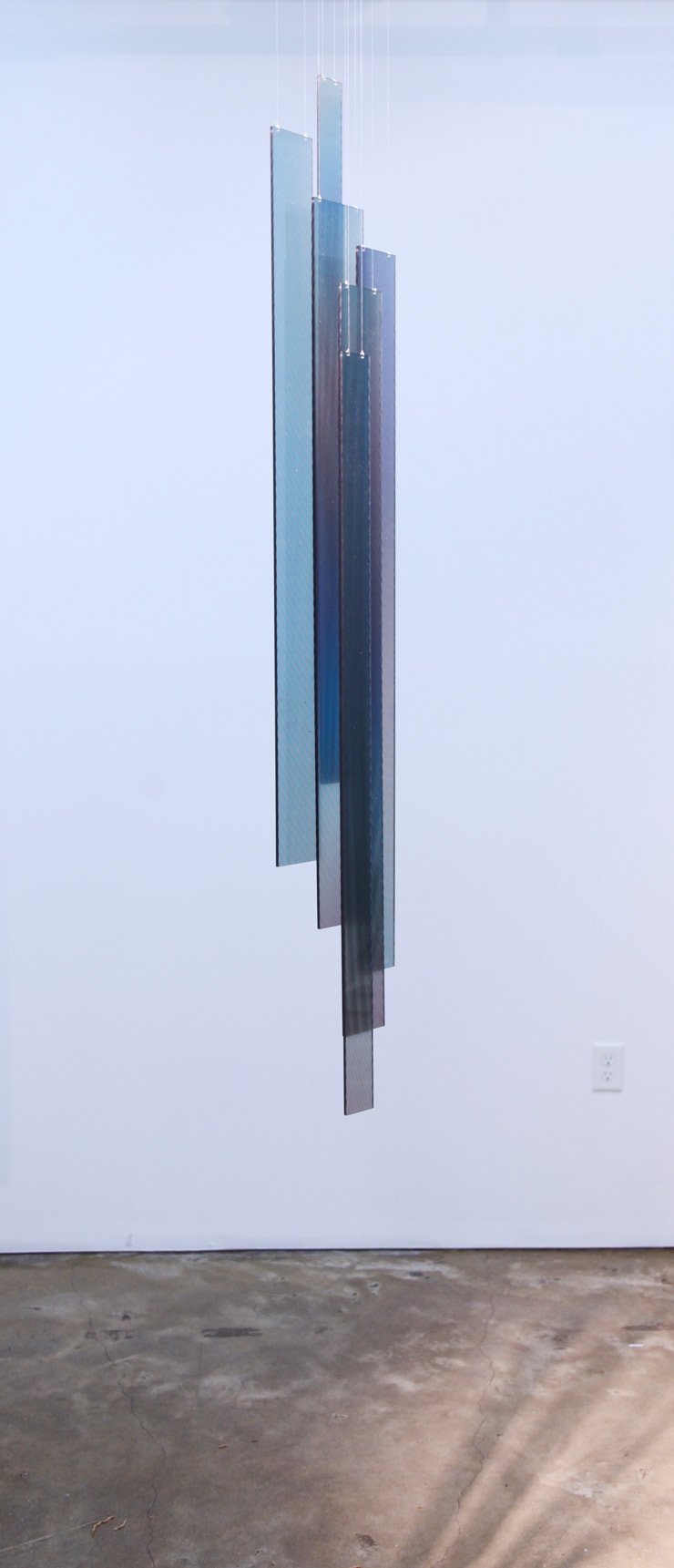
Felipe Pantone. Planned Iridescence. GR Gallery. NYC. October, 2017. (Photo © Jaime Rojo)
BSA: What’s the difference between this new series and what he has shown in his previous group shows in this gallery?
Alberto Pasini: Basically the difference is in the materials. Before he was just painting on aluminum or on board. Now there’s this new element which gives the viewer the actual sensation of movement. The people attending the exhibition will be able to experience the making of this series in a video which will be shown at night in the window of the gallery so people walking on the street will be able to see his process.
We are very proud of this exhibition and also for the fact that this is the first time Felipe is presenting this new series. This is his best work to-date. I also like the fact that this exhibition is not constrained just inside the gallery but it is also outside on the street. He’s painted two walls in the neighborhood close to the gallery.

Felipe Pantone. Planned Iridescence. GR Gallery. NYC. October, 2017. (Photo © Jaime Rojo)
Felipe Pantone “Planned Iridescence” opens today at the GR Gallery in Manhattan. For further details click HERE
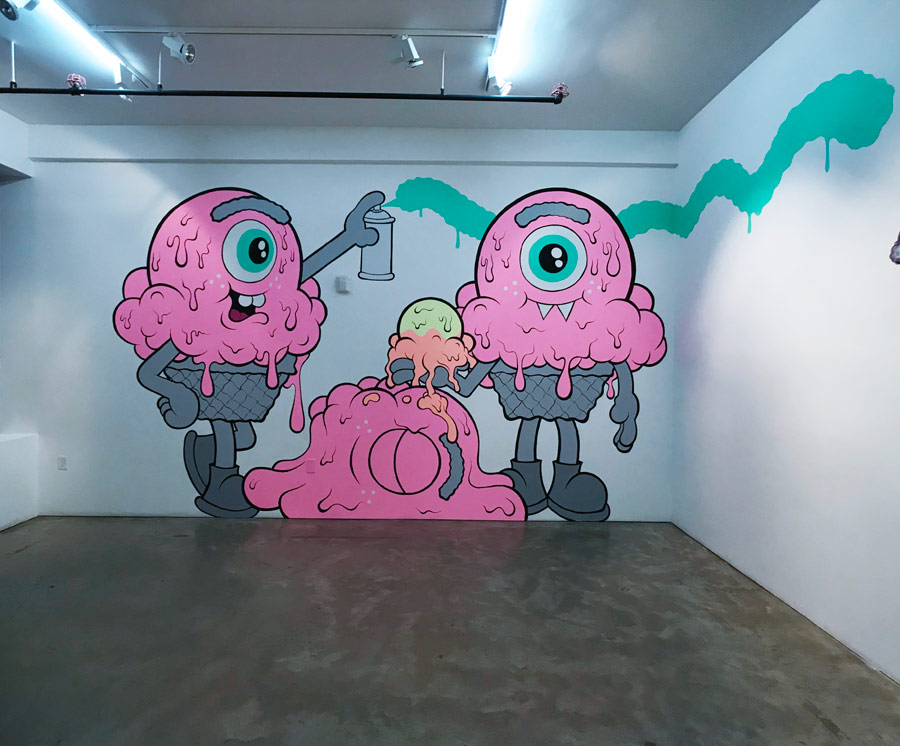
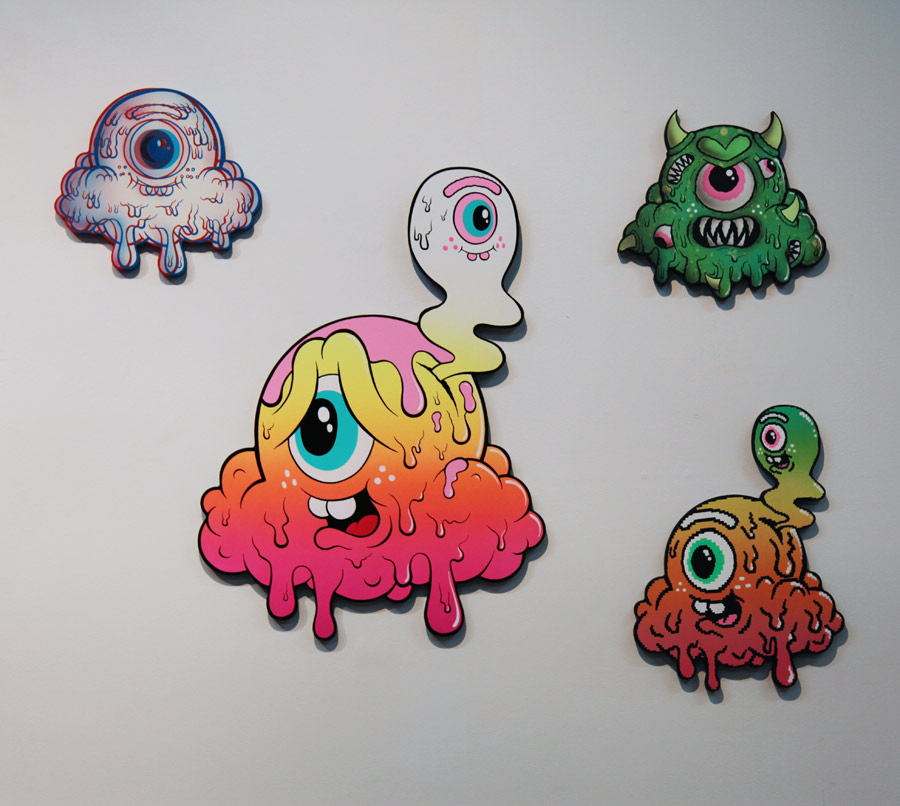
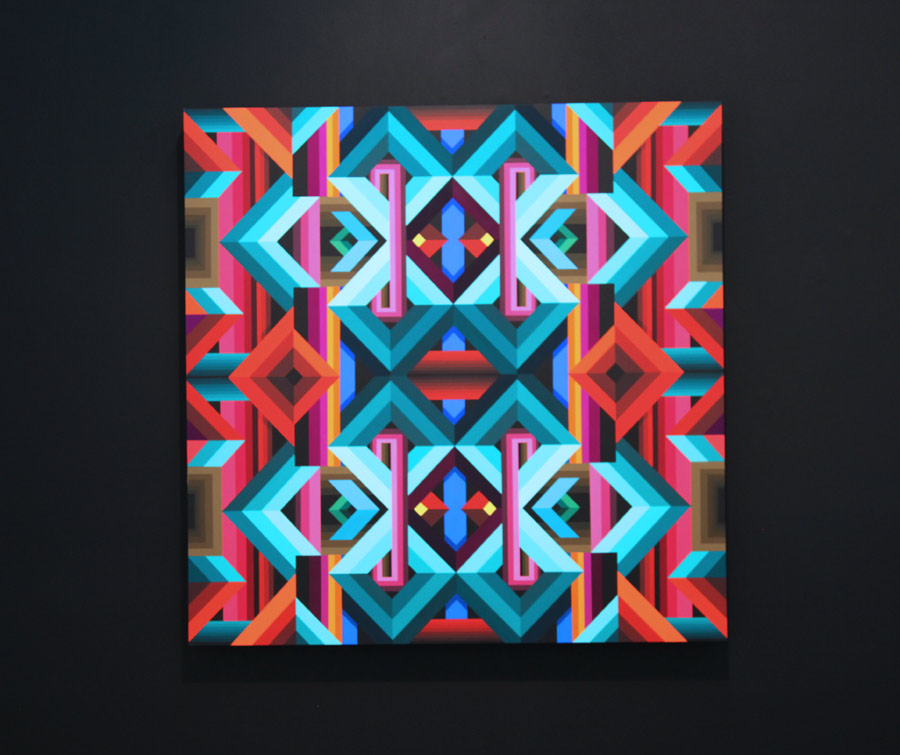
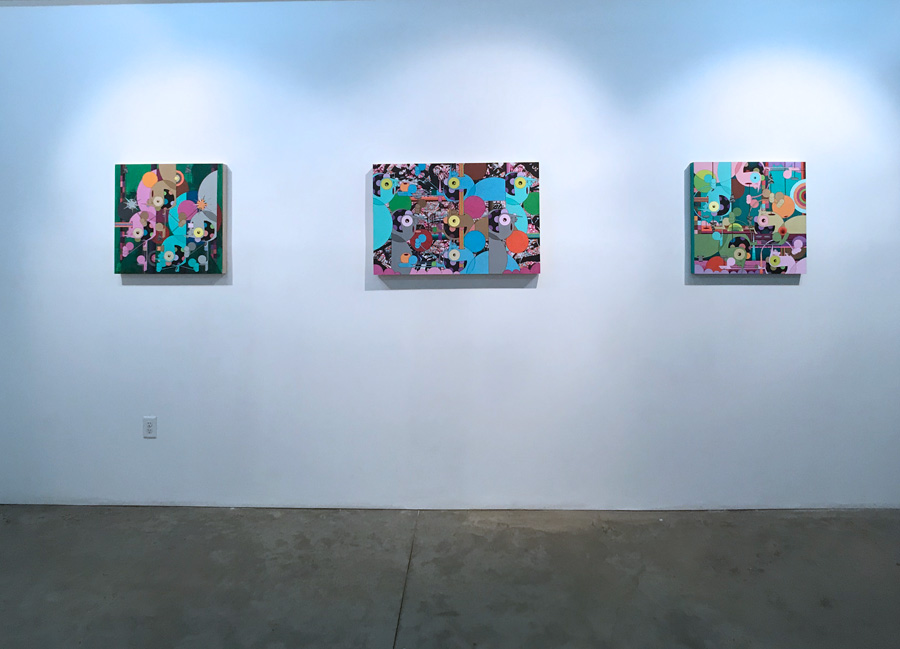
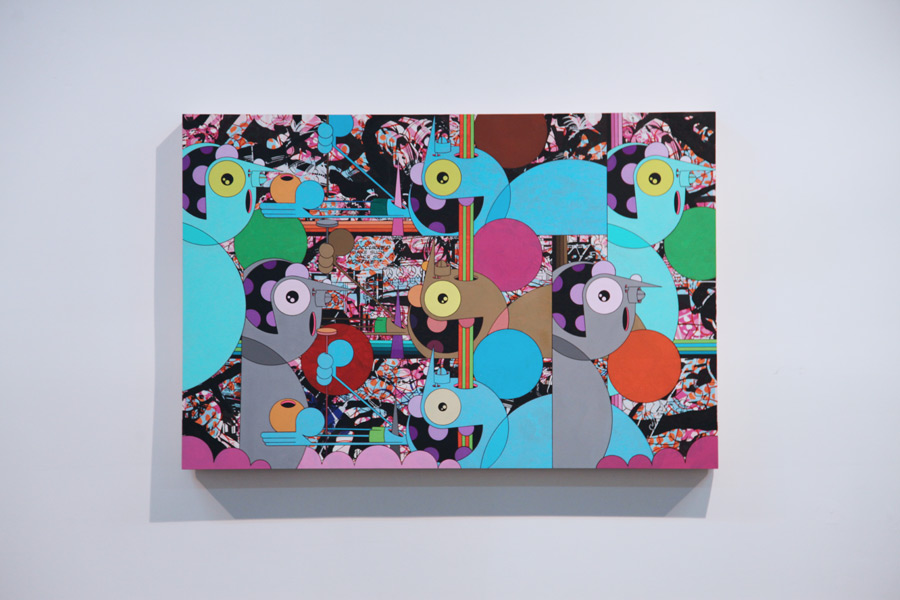

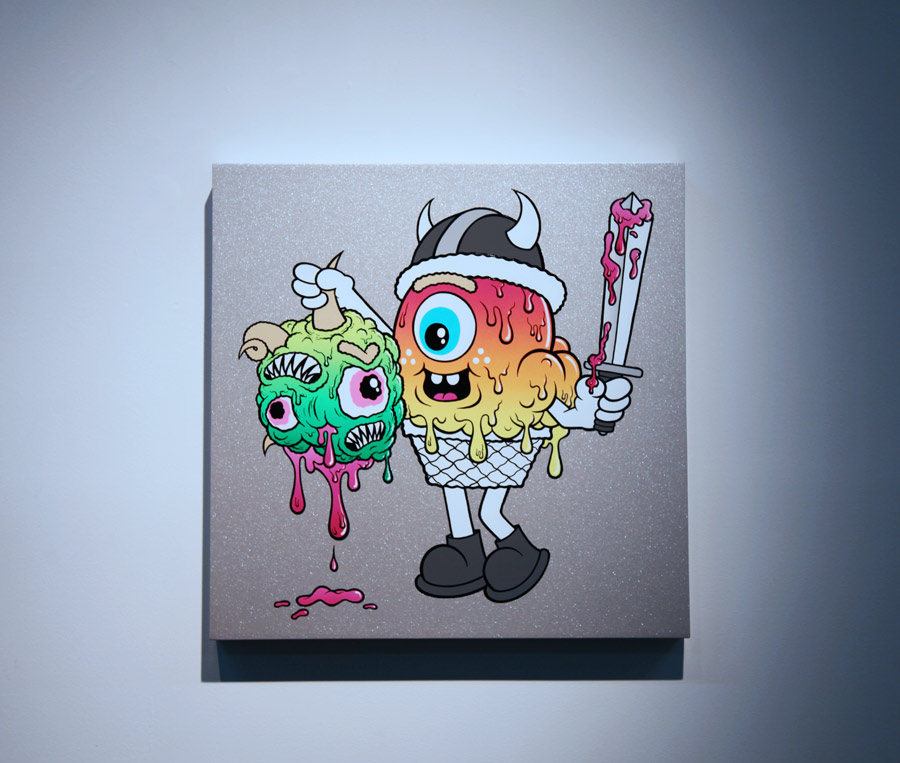
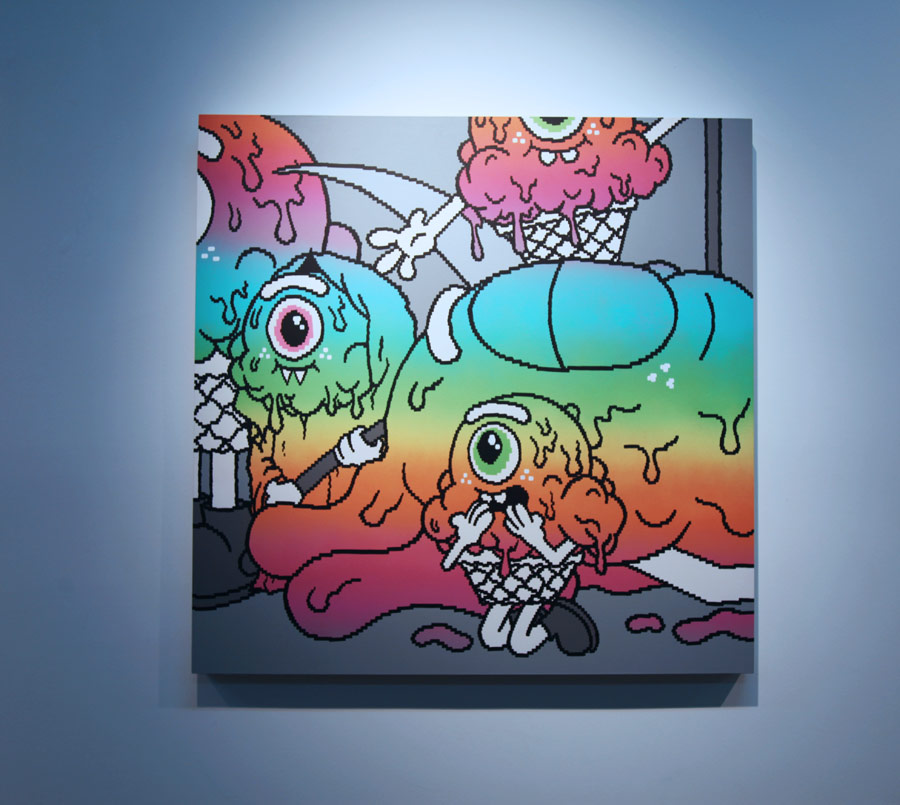

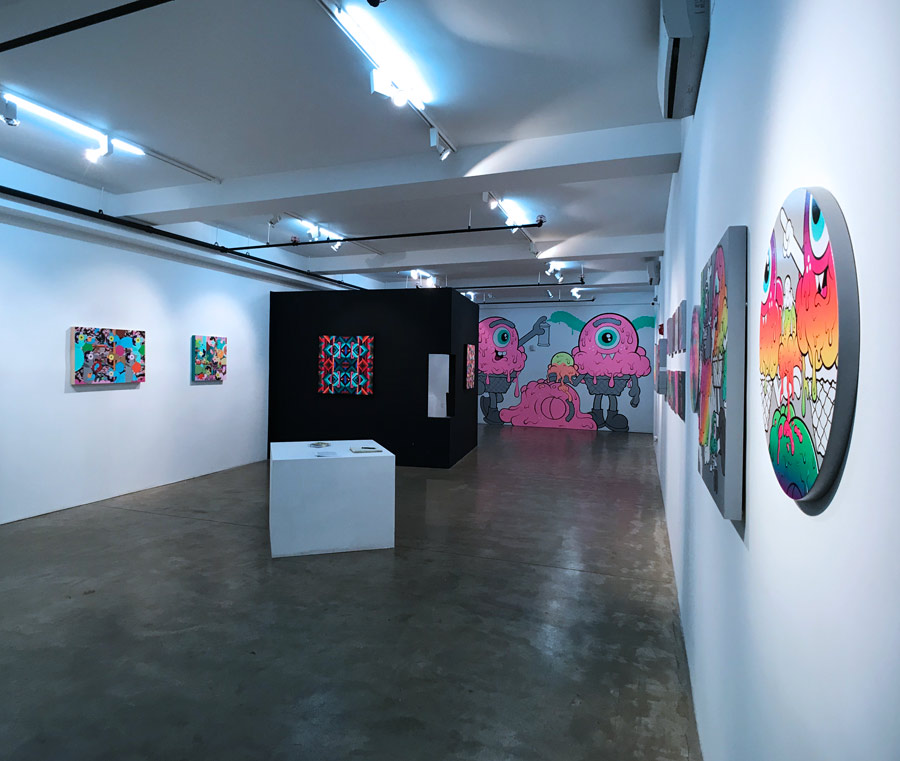
 BROOKLYN STREET ART LOVES YOU MORE EVERY DAY
BROOKLYN STREET ART LOVES YOU MORE EVERY DAY